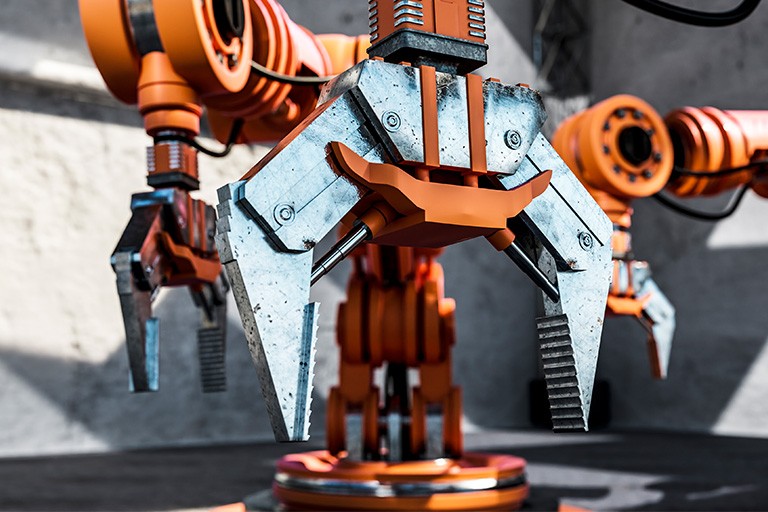Evolution of Robotics in Cyberphysical Realms

"Evolution of Robotics in Cyber-Physical Realms"
The evolution of robotics within cyber-physical realms represents a remarkable journey marked by transformative advancements and the seamless integration of intelligent machines into the fabric of our physical world. This synergy between robotics and cyber-physical systems (CPS) has given rise to innovative applications across diverse industries. Let's trace the evolution of robotics in the context of cyber-physical realms and explore its multifaceted impact:
1. Industrial Robotics:
- Automated Manufacturing: The inception of robotics in cyber-physical systems began with industrial applications. Robotic arms and automation systems revolutionized manufacturing, enhancing efficiency, precision, and scalability in production processes.
2. Collaborative Robotics (Cobots):
- Human-Robot Collaboration: The evolution brought forth collaborative robots, or cobots, designed to work alongside humans. In cyber-physical realms, cobots enhance safety and efficiency by collaborating with human workers in manufacturing, logistics, and other industries.
3. Autonomous Vehicles:
- Robotics in Transportation: Robotics has played a pivotal role in the development of autonomous vehicles within cyber-physical systems. From self-driving cars to drones, robotics contributes to intelligent navigation, collision avoidance, and real-time decision-making.
4. Healthcare Robotics:
- Robotic Surgery and Assistance: In healthcare, robotics has evolved to include surgical robots and assistive devices. These systems operate within cyber-physical environments to enhance the precision of medical procedures and provide support to healthcare professionals.
5. Smart Homes and Service Robotics:
- Domestic Assistance: Robotics has entered domestic spaces through smart homes and service robots. These robots, integrated into cyber-physical systems, assist with household chores, provide security, and offer personalized services.
6. Robotic Process Automation (RPA):
- Automating Business Processes: Robotic Process Automation (RPA) leverages robotics in cyber-physical systems to automate routine business processes. This includes data entry, document processing, and other repetitive tasks across various industries.
7. Agricultural Robotics:
- Precision Farming: Robotics has transformed agriculture through precision farming within cyber-physical realms. Drones, autonomous tractors, and robotic harvesters contribute to efficient and data-driven agricultural practices.
8. Construction Robotics:
- Automated Construction Processes: In the construction industry, robotics in cyber-physical systems automate various tasks, including bricklaying, 3D printing of structures, and site inspections, leading to increased efficiency and safety.
9. Exploration and Space Robotics:
- Robotic Exploration: Robotics has expanded its reach beyond Earth, contributing to space exploration. Space rovers and robotic systems operate in cyber-physical environments, conducting research and exploration on celestial bodies.
10. Robotics in Disaster Response:
- Search and Rescue: Robotics within cyber-physical systems play a crucial role in disaster response. Drones and robotic devices assist in search and rescue operations, navigating challenging environments to locate and aid individuals in distress.
11. Swarm Robotics:
- Coordinated Robot Swarms: The evolution of robotics includes the emergence of swarm robotics, where multiple robots collaborate to perform tasks collectively. This approach is applied in surveillance, environmental monitoring, and exploration.
12. Humanoid Robotics:
- Human-Like Robots: Advancements in humanoid robotics bring machines closer to emulating human movements and interactions. In cyber-physical realms, humanoid robots find applications in customer service, education, and healthcare.
13. Edge Robotics:
- Decentralized Robotics: The evolution extends to edge robotics, where robots operate at the edge of the network, enhancing real-time processing and decision-making capabilities. This is particularly valuable in applications like autonomous vehicles and IoT devices.
The evolution of robotics within cyber-physical realms exemplifies the dynamic interplay between intelligent machines and the physical world. As advancements continue, the collaborative synergy between robotics, AI, and interconnected systems will redefine possibilities, introducing new dimensions of efficiency, adaptability, and innovation across industries and daily life.
